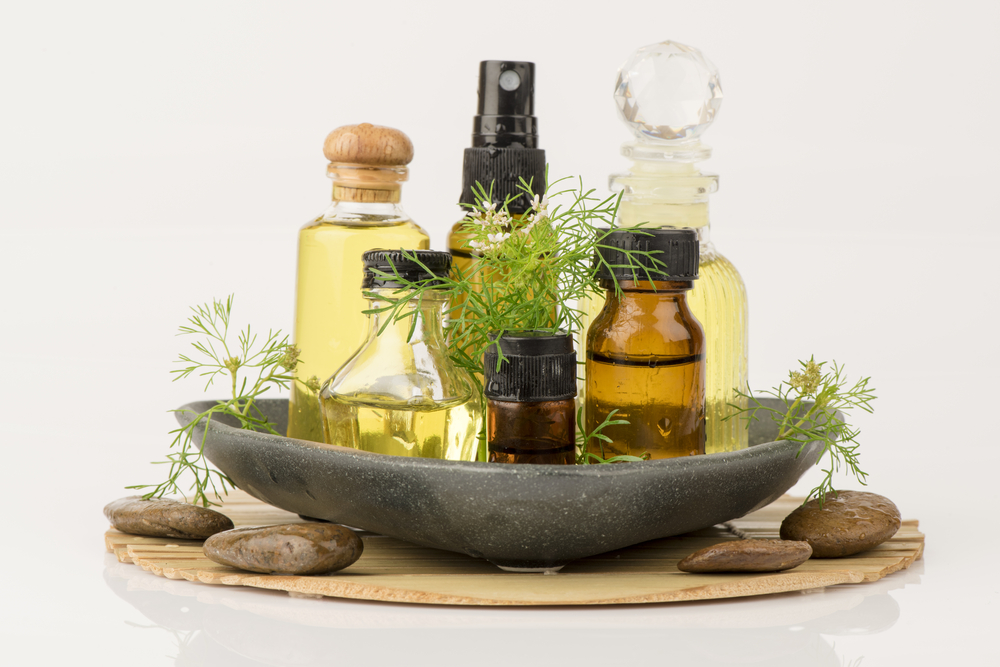The skincare aisle has exploded with brightening products promising to give you that coveted glow, but many come with ingredient lists that read like a chemistry exam. Meanwhile, some of the most effective skin-brightening solutions have been hiding in nature all along, often in the form of oils that your grandmother might have sworn by.
Natural oils don’t just moisturize – many contain powerful compounds that can fade dark spots, even out skin tone, and bring a natural radiance to your complexion without the harsh side effects of synthetic ingredients. If you’re looking to brighten your skin the natural way, these plant-powered oils deserve a spot in your skincare routine.
Rosehip oil brings vitamin power to dark spots
When it comes to natural brightening, rosehip oil stands out as a superstar. This amber-colored oil extracted from wild rose bushes doesn’t smell like roses – it has a subtle earthy scent – but what it lacks in fragrance, it makes up for in skin-transforming abilities.
Rosehip oil contains an impressive concentration of vitamins A and C, both renowned for their brightening properties. The vitamin A works similarly to retinol, accelerating cell turnover so that dark, damaged cells make way for fresh, brighter skin more quickly. Meanwhile, the vitamin C inhibits melanin production, which can help fade hyperpigmentation and prevent new dark spots from forming.
What makes rosehip particularly special is its combination of brightening power with serious moisture. Unlike some brightening ingredients that can be drying or irritating, rosehip oil nourishes while it brightens, making it suitable for most skin types. Its lightweight texture absorbs quickly without leaving a greasy residue, which even makes it appropriate for those with oily or combination skin.
For best results, apply a few drops of rosehip oil to slightly damp skin after cleansing in the evening. The slight moisture helps the oil penetrate more effectively, and using it at night gives the vitamins time to work their magic while you sleep.
Vitamin C-rich sea buckthorn repairs and brightens
Sea buckthorn oil might not be as well-known as some other facial oils, but this bright orange liquid packs a powerful punch when it comes to brightening skin tone. Extracted from the berries and seeds of the sea buckthorn plant, this oil contains one of the highest natural concentrations of vitamin C found in the plant world.
Vitamin C is well-established as a skin brightener, but sea buckthorn brings additional benefits through its unique composition of omega fatty acids, including the rare omega-7. These fatty acids help repair the skin barrier, which is essential for maintaining even skin tone and preventing the inflammation that can trigger hyperpigmentation.
The carotenoids that give sea buckthorn oil its vivid color also contribute to its brightening effects. These antioxidants help neutralize free radicals that can damage skin and cause uneven pigmentation. With consistent use, these compounds help reveal brighter, more uniform skin tone.
Sea buckthorn oil is quite potent and can temporarily stain the skin orange if used undiluted, so it’s best mixed with a carrier oil like jojoba or incorporated into your moisturizer. A few drops mixed into your nighttime moisturizer can make a noticeable difference in skin brightness over time.
Licorice-infused oils tackle stubborn discoloration
Licorice root has been used in traditional medicine for centuries, and modern research confirms what ancient healers knew – this plant has remarkable effects on skin. Oils infused with licorice root extract are particularly effective for brightening skin tone due to the active compound glabridin.
Glabridin works by inhibiting the enzyme tyrosinase, which is responsible for triggering melanin production. By gently interfering with this process, licorice-infused oils can help fade existing dark spots and prevent new ones from forming, all without the harsh effects of synthetic brighteners like hydroquinone.
What makes licorice-based oils stand out is their suitability for sensitive skin. Unlike many brightening agents that can cause irritation, licorice extract has anti-inflammatory properties that actually calm the skin while brightening. This makes it an excellent choice for those with redness or reactive skin who still want brightening benefits.
You can find pre-made oils containing licorice extract, or you can create your own by adding a few drops of licorice root extract to a base oil like argan or marula. Apply a small amount to clean skin before your moisturizer, focusing on areas with hyperpigmentation.
Pomegranate seed oil fights aging while brightening
Pomegranate seed oil might be best known for its anti-aging properties, but this ruby-red oil deserves recognition for its skin-brightening abilities too. Rich in punicic acid, a type of omega-5 fatty acid, pomegranate oil helps repair damaged skin cells and promote regeneration of the skin’s surface.
The oil contains powerful antioxidants that combat free radical damage – one of the primary causes of uneven skin tone and dark spots. It also has natural sun-protective qualities, helping prevent the UV-induced hyperpigmentation that leads to age spots and melasma.
What makes pomegranate particularly valuable is its ability to penetrate deeply into the skin despite its rich texture. The oil can deliver its brightening compounds to the deeper layers of the epidermis, where pigment cells reside, for more effective results.
Pomegranate seed oil also stimulates keratinocytes, the most common cell type in the outer layer of skin. This stimulation helps revitalize the skin surface, revealing brighter skin and a more radiant complexion over time.
For best results, massage a few drops into clean skin after any water-based serums but before heavier creams. Its slightly astringent quality makes it suitable for normal to combination skin, though those with very dry skin might want to layer it with a more emollient oil.
Carrot seed oil brings retinol-like effects naturally
Carrot seed oil shouldn’t be confused with carrot carrier oil – it’s actually a potent essential oil derived from wild carrot seeds through steam distillation. This golden oil contains high levels of carotenoids and vitamin A, giving it natural retinol-like properties without the irritation that synthetic retinoids can cause.
The compounds in carrot seed oil stimulate cell turnover and regeneration, helping to shed the pigmented, damaged cells on the skin’s surface to reveal brighter skin underneath. It also contains antioxidants that protect against environmental damage that can trigger or worsen dark spots.
What makes carrot seed oil particularly valuable for brightening is its ability to regulate sebum production while delivering brightening compounds. This dual action helps prevent the oil buildup and subsequent inflammation that can lead to post-inflammatory hyperpigmentation, especially for those prone to breakouts.
Since carrot seed oil is quite concentrated, it should always be diluted before applying to skin. Mix 2-3 drops with a tablespoon of a neutral carrier oil like jojoba or grapeseed. Apply this mixture to clean skin in the evening, as the compounds can cause sun sensitivity.
Turmeric-infused oils for ancient brightening wisdom
Turmeric has been used in Ayurvedic skincare for thousands of years, particularly for brightening and evening skin tone. Modern science has confirmed what traditional practitioners knew – the active compound curcumin has powerful brightening properties.
Oils infused with turmeric extract provide the brightening benefits of this spice without the intense yellow staining that raw turmeric powder can cause. These oils work by inhibiting melanin production and providing antioxidant protection, gradually fading dark spots and preventing new discoloration.
What makes turmeric-infused oils particularly effective is their anti-inflammatory action. Many types of hyperpigmentation, especially post-inflammatory dark spots from acne or other injuries, are worsened by inflammation. By calming this inflammatory response, turmeric oils help prevent the pigment-producing cascade that leads to dark spots.
You can find pre-made turmeric-infused oils, or make your own by warming a carrier oil like coconut or sesame and steeping turmeric in it before straining. Apply a small amount to affected areas after cleansing and before moisturizing for best results.
Evening primrose oil for hormonal dark spots
Evening primrose oil has long been valued for its hormone-balancing effects when taken internally, but it offers significant benefits as a topical treatment for hormonal hyperpigmentation as well. This light yellow oil contains gamma-linolenic acid (GLA), an omega-6 fatty acid that helps regulate the skin’s response to hormonal fluctuations.
Hormonal dark patches, often appearing on the cheeks, forehead, and upper lip, can be particularly stubborn to treat. Evening primrose oil helps address the underlying hormonal influences while delivering anti-inflammatory compounds that reduce the skin’s pigmentation response.
The oil also strengthens the skin barrier, which is often compromised in those with hyperpigmentation. A stronger barrier means less inflammation and irritation, which in turn helps prevent the triggering of melanin production that leads to dark spots.
Evening primrose oil has a light, non-greasy texture that absorbs readily into the skin. Apply 3-4 drops to clean skin, focusing on areas of hormonal pigmentation. It works well both morning and night, though using it consistently in your evening routine tends to yield the best results.
The mix-and-match approach for powerful results
While each of these oils offers impressive brightening benefits on its own, some of the most dramatic results come from thoughtfully combining them. Different brightening oils work through various mechanisms – some inhibit melanin production, others speed cell turnover, and still others repair damage and inflammation that lead to dark spots.
A simple yet effective approach is to create a custom oil blend that addresses your specific concerns. For example, combining rosehip oil with a few drops of sea buckthorn provides both vitamin A and vitamin C for comprehensive brightening. Or mix evening primrose with a licorice-infused oil to tackle hormonal dark spots from multiple angles.
Regardless of which oils you choose, consistency is key for visible results. Natural brightening happens gradually as the skin renewal cycle progresses, typically taking 4-6 weeks to show noticeable improvement. Patient, consistent application will reveal naturally luminous skin without harsh chemicals or complicated routines.
Remember that brightening oils work best as part of a comprehensive approach that includes gentle exfoliation to remove dead skin cells and diligent sun protection to prevent new pigmentation. With this holistic strategy, natural oils can transform dull, uneven skin into the glowing complexion you’ve been seeking.















